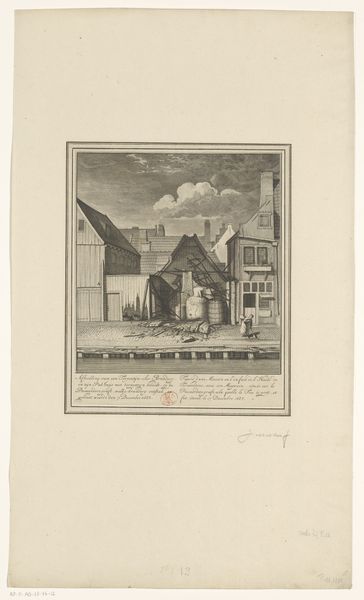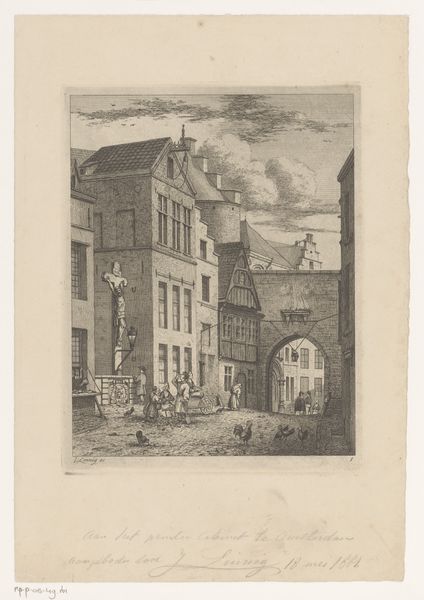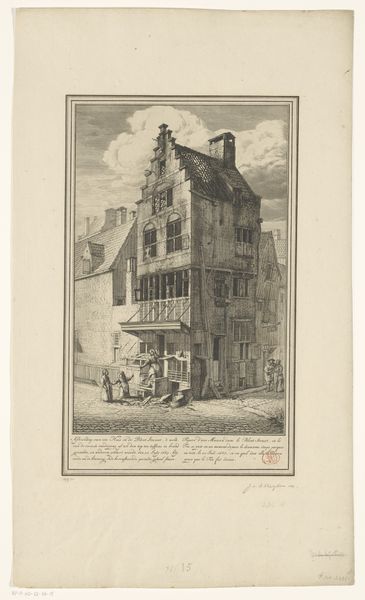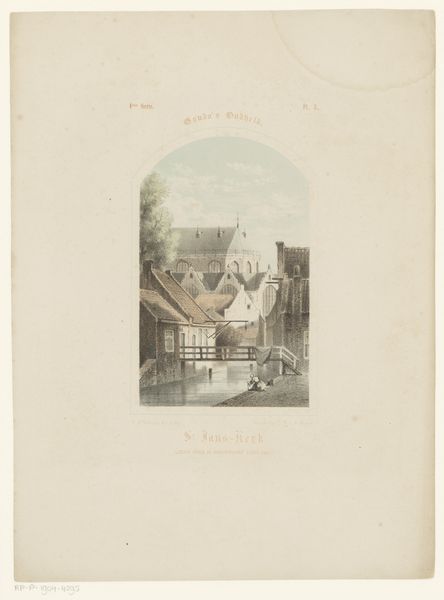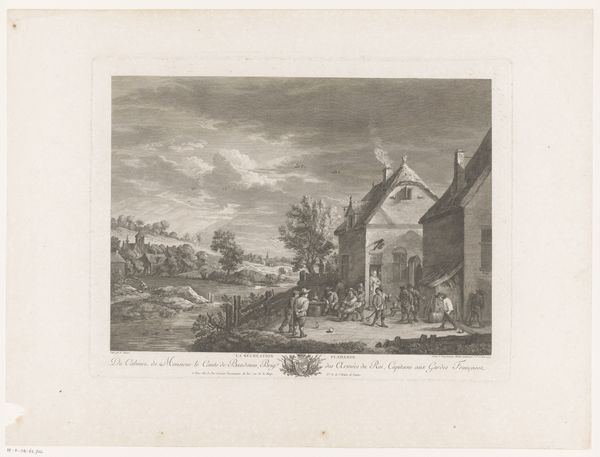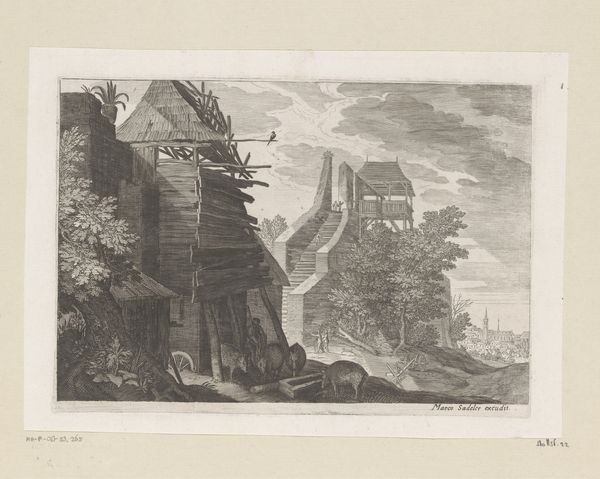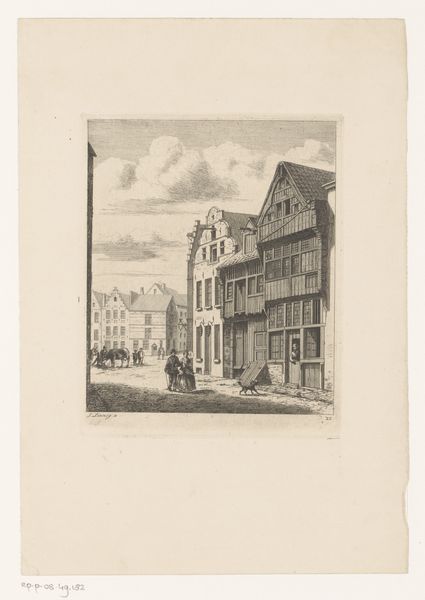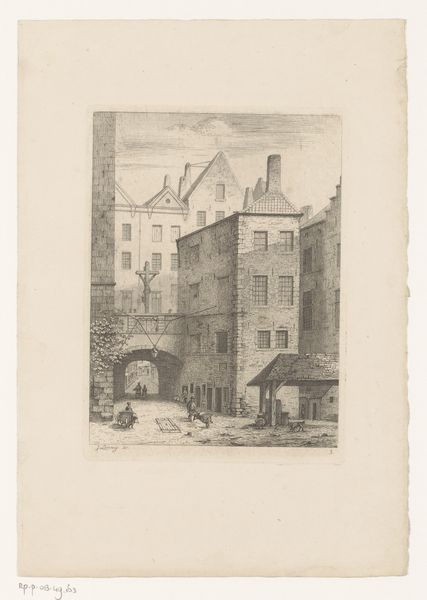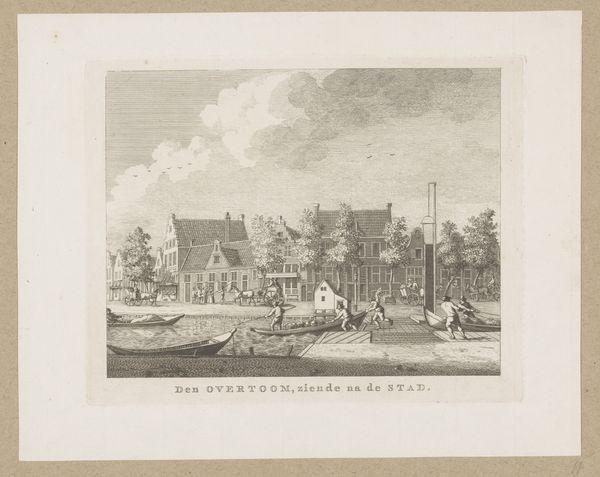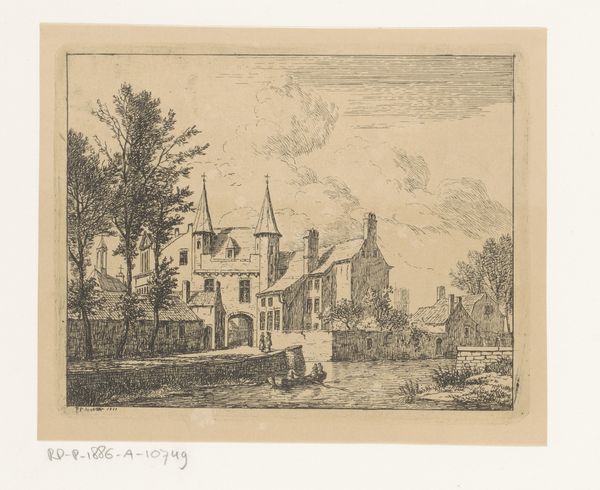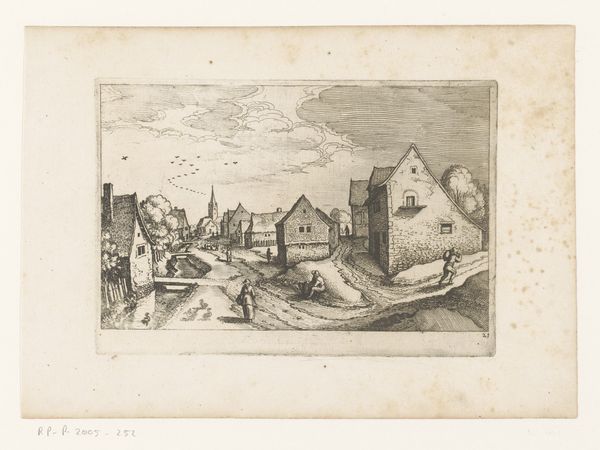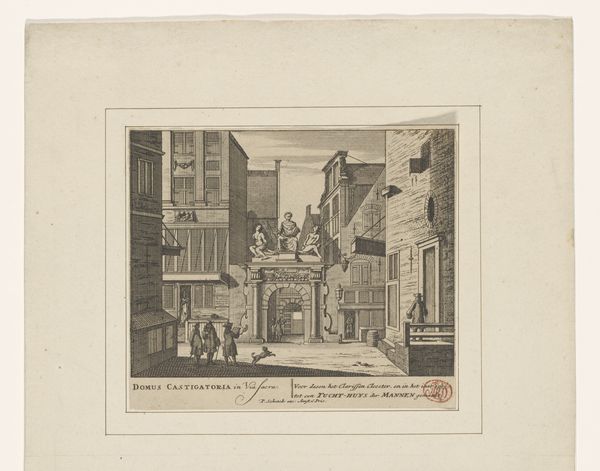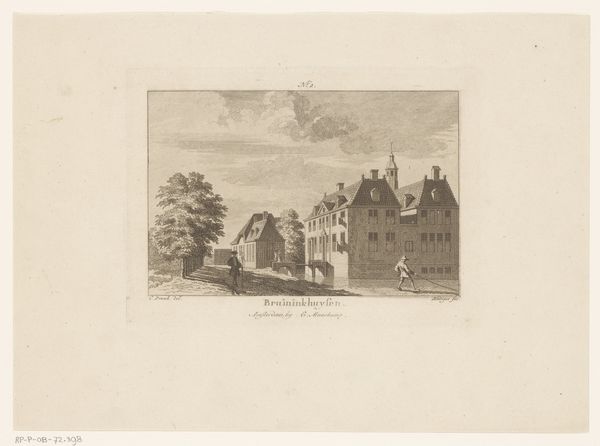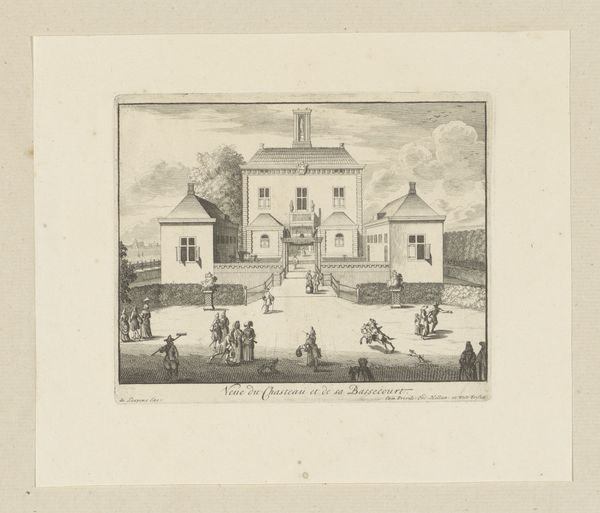
Uitgebrande huizen in de Goudsbloemstraat te Amsterdam, 1682 1690 - 1735
0:00
0:00
drawing, print, etching, paper, engraving
#
drawing
#
dutch-golden-age
# print
#
etching
#
paper
#
cityscape
#
engraving
Dimensions: height 294 mm, width 208 mm
Copyright: Rijks Museum: Open Domain
This etching of burnt-out houses in Goudsbloemstraat, Amsterdam, was made in 1682 by Jan van der Heyden. Notice the composition: a stark depiction of urban devastation, sharply rendered through precise lines and contrasting tones. The artist masterfully employs a central vanishing point, drawing our eyes to the skeletal remains of the buildings, while the smoke stack rises vertically. This formal structure evokes a sense of depth and decay. The scene functions as a semiotic system. The destroyed buildings symbolize the fragility of human constructions against the forces of nature or perhaps even societal collapse, while the people gathered nearby represent a community's response to disaster. The image destabilizes the conventional understanding of the city as a place of safety and order. The detailed rendering of textures, from the charred wood to the patterned brickwork, serves to highlight the physical reality of destruction, forcing us to confront the material consequences of such events. The artwork becomes a discourse on urban space, challenging viewers to consider themes of impermanence and resilience.
Comments
No comments
Be the first to comment and join the conversation on the ultimate creative platform.
